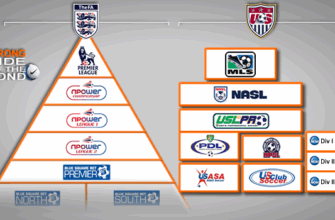The 2025/26 season of the Portuguese Primeira Liga is poised to kick off with an intriguing geographical anomaly. For the first time in over 70 years, the capital city of Lisbon will field an unprecedented six teams in the top flight, signaling a dramatic shift in the league`s regional distribution. This concentration, while a boon for Lisbon football, highlights a deepening disparity across the rest of Portugal`s footballing landscape.
Lisbon`s Unprecedented Renaissance: A Blast from the Past
As the Primeira Liga 2025/26 season commences, the spotlight falls squarely on the Lisbon Football Association (AF Lisboa). With six teams – Casa Pia, Sporting CP, Benfica, Estoril, Estrela da Amadora, and the newly promoted Alverca – the capital accounts for a full third of the 18 clubs vying for national glory. This is not merely a statistical curiosity; it`s a return to a bygone era.
One must rewind to the 1951/52 season to find a comparable scenario, when Lisbon proudly boasted Atlético, Estoril, Belenenses, Oriental, Sporting, and Benfica in the top division. For decades, the presence of so many capital clubs in the Primeira Liga remained a distant memory, particularly evident in the 2011/12 season when AF Lisboa contributed a mere two teams to the league. The current surge represents a significant resurgence, proving that the geographical pendulum of Portuguese football can indeed swing back with surprising force.
The Vanishing South: A Footballing Desert
While Lisbon basks in its newfound (or rather, re-found) glory, the narrative for Portugal`s southern regions is one of stark absence. Following the relegation of Farense at the close of last season, coupled with the prior departures of Portimonense and Vitória de Setúbal, there will be not a single club from south of the Tagus river competing in the Primeira Liga. This desolate outlook for southern football is a phenomenon not witnessed since the 2003/04 campaign.
It`s a far cry from the late 20th century, when the south could consistently muster three top-tier representatives, or the 1970s, which saw a remarkable six southern teams simultaneously gracing the highest echelon of Portuguese football. The current situation paints a concerning picture of regional decline, leaving a vast geographic expanse without top-tier football to call its own.
The Concentrated Power: Lisbon, Minho, and Porto Reign
The six Lisbon teams form the cornerstone of a deeply imbalanced league map. Joining them in prominence are clubs from the Minho region and the Porto district. The Minho, represented by the AF Braga, fields five strong teams: SC Braga, Vitória SC, Famalicão, Moreirense, and Gil Vicente. Historically a robust footballing region, Minho recently even surpassed Lisbon`s representation just two seasons prior.
The AF Porto contributes three teams: perennial powerhouse FC Porto, AVS, and Rio Ave, following the recent relegation of Boavista. Cumulatively, these three football associations – Lisbon, Braga, and Porto – account for a staggering 14 of the 18 teams in the Primeira Liga 2025/26. This extreme concentration of talent and resources in just a few regional pockets raises pertinent questions about the league`s national identity and grassroots development across the country.
The Silence of the Interior and the Resilience of the Islands
Beyond these dominant hubs, the Primeira Liga map reveals a significant void. Only two other associations manage a single representative each: AF Aveiro with Arouca, a club now embarking on its fifth consecutive season in the top flight, and AF Viseu, which rejoins the elite thanks to the promotion of Tondela, the II Liga champions of 2024/25. The geographical “desertification” of Portugal`s vast interior is, regrettably, starkly evident.
Meanwhile, Portugal`s autonomous island regions maintain a fragile hold on top-tier representation. The Madeira Islands (AF Madeira) are represented by Nacional, and the Azores (AF Ponta Delgada) by Santa Clara. Both regions experienced a complete absence from the Primeira Liga in the 2023/24 season, making their return and subsequent maintenance of status (with Santa Clara even securing a European spot) a testament to their resilience. Yet, even here, historical benchmarks remain distant; Madeira, for instance, once boasted three teams concurrently in the top league as recently as a decade ago.
Looking Ahead: A League Divided?
The absence of representation from 15 of Portugal`s 22 football associations speaks volumes. Regions like Alentejo have been without a top-tier team for 25 consecutive seasons (since Campomaiorense in 2000/01), while Beira Baixa`s wait extends even further, since SC Covilhã`s last appearance in 1987/88. This enduring geographical imbalance poses a significant challenge to the notion of a truly national football league.
While the concentration of top clubs can lead to more intense regional rivalries and potentially elevate the overall quality of football in specific areas, it also risks alienating fans and stifling football development in underserved regions. The 2025/26 Primeira Liga season will undoubtedly be thrilling, but its unique geographical footprint will serve as a constant reminder of the complex, ever-evolving landscape of Portuguese football.









